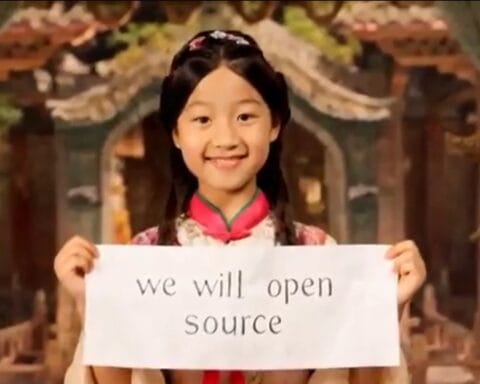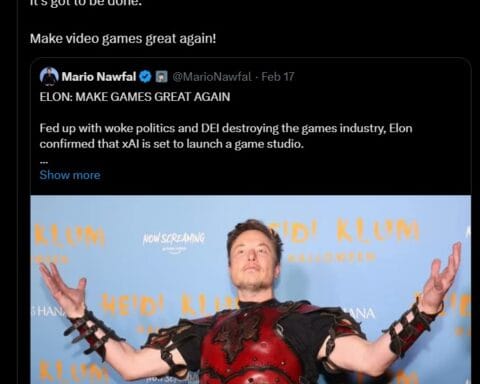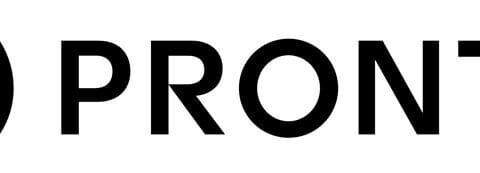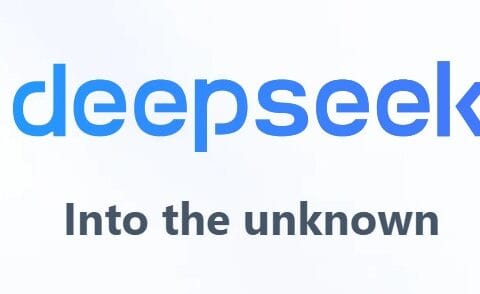Last Updated on May 17, 2024 11:44 am by Laszlo Szabo / NowadAIs | Published on May 17, 2024 by Laszlo Szabo / NowadAIs
Explore Google Veo: Next-Gen AI for Video Creation – Key Notes
- Google Veo: Google’s advanced AI-powered video generation model.
- High-quality videos: Generates 1080p resolution videos beyond one minute in length.
- Cinematic control: Edits input videos with textual commands, including masked editing.
- Visual consistency: Uses latent diffusion transformers for seamless video flow.
- Extensive training data: Builds on previous models like GQN, DVD-GAN, and Imagen-Video.
- Ethical development: Incorporates watermarking, safety filters, and privacy checks.
- Collaborative effort: Engages with filmmakers and creators for feedback.
- Limited rollout: Initially available through VideoFX in the AI Test Kitchen.
Google Veo is Ready to Change the Film Making Industry
The announcement of Google’s Veo has sent shockwaves through the entertainment industry.
This AI-powered video generation model promises to redefine the boundaries of visual storytelling, empowering creators, filmmakers, and aspiring artists alike. As the latest contender in the race for AI-driven video synthesis, Veo emerges as a formidable challenger to OpenAI’s Sora, showcasing an unprecedented level of sophistication and creative potential.
Veo’s Capabilities: Pushing the Boundaries of Video Generation
Veo, Google’s most advanced generative video model to date, boasts the ability to create high-quality, 1080p resolution videos that can extend beyond a minute in length.
“Veo is our most capable video generation model to date. It generates high-quality, 1080p resolution videos that can go beyond a minute, in a wide range of cinematic and visual styles.”
Google Deepmind stated.
Equipped with an advanced understanding of natural language, Veo can accurately interpret and translate text prompts into cinematic masterpieces, seamlessly capturing the nuance and tone of the given instructions. From breathtaking time-lapses to immersive aerial shots, Veo’s versatility knows no bounds, unlocking a world of creative possibilities for filmmakers, content creators, and educators alike.
Cinematic Control and Editing Mastery
One of Veo’s standout features is its exceptional control over cinematic elements. By accepting both input videos and textual editing commands, Veo can apply the specified changes to the original footage, effectively transforming it into a new, edited video. This capability extends to masked editing, allowing users to make targeted adjustments to specific areas of the video, further enhancing the creative control at their fingertips.
Consistent and Coherent Visuals
Maintaining visual consistency has long been a challenge for video generation models, with characters, objects, and even entire scenes often flickering, jumping, or morphing unexpectedly between frames. However, Veo’s cutting-edge latent diffusion transformers address this issue, ensuring that the generated videos exhibit a seamless and natural flow, akin to real-life footage.
Leveraging Extensive Training Data
Veo’s impressive capabilities are the result of years of research and development in the field of generative video models. Building upon the foundations of Google’s previous work, including Generative Query Network (GQN), DVD-GAN, Imagen-Video, Phenaki, WALT, VideoPoet, and Lumiere, Veo has been meticulously trained on a vast trove of high-quality video data, further enhanced by detailed captions to improve its understanding of prompts and visual semantics.
Responsible by Design: Mitigating Risks and Empowering Creators
Recognizing the profound impact of technologies like Veo, Google has adopted a responsible approach to its development and deployment. Videos generated by Veo are watermarked using SynthID:
“Videos created by Veo are watermarked using SynthID, our cutting-edge tool for watermarking and identifying AI-generated content, and passed through safety filters and memorization checking processes that help mitigate privacy, copyright and bias risks.”
Collaborative Approach: Empowering the Creative Community
Google’s vision for Veo extends beyond mere technological advancement; it is a collaborative endeavor that seeks to empower the creative community. The company is actively engaging with leading filmmakers, actors, and content creators, such as Donald Glover and his studio, Gilga, to gather feedback and ensure that Veo’s capabilities are tailored to the needs and aspirations of the industry.
Experimental Rollout and Future Integration
Initially, Veo’s accessibility will be limited to a select group of creators through Google’s VideoFX, a new experimental tool within the AI Test Kitchen. This gradual rollout allows the company to work closely with these early adopters, gathering insights and refining the model before a broader release. Looking ahead, Google plans to integrate some of Veo’s capabilities into popular platforms like YouTube Shorts, ensuring that the benefits of this revolutionary technology reach a wider audience.
Veo vs. Sora: The Race for AI-Driven Video Synthesis
The introduction of Veo has reignited the competition in the AI video synthesis landscape, with OpenAI’s Sora serving as a formidable rival. While both models showcase impressive capabilities, Veo’s emphasis on cinematic control, visual consistency, and collaborative development sets it apart. As the two technologies continue to evolve, the creative community eagerly awaits the opportunities and challenges that this burgeoning field will present.
Harnessing the Power of Latent Diffusion Transformers
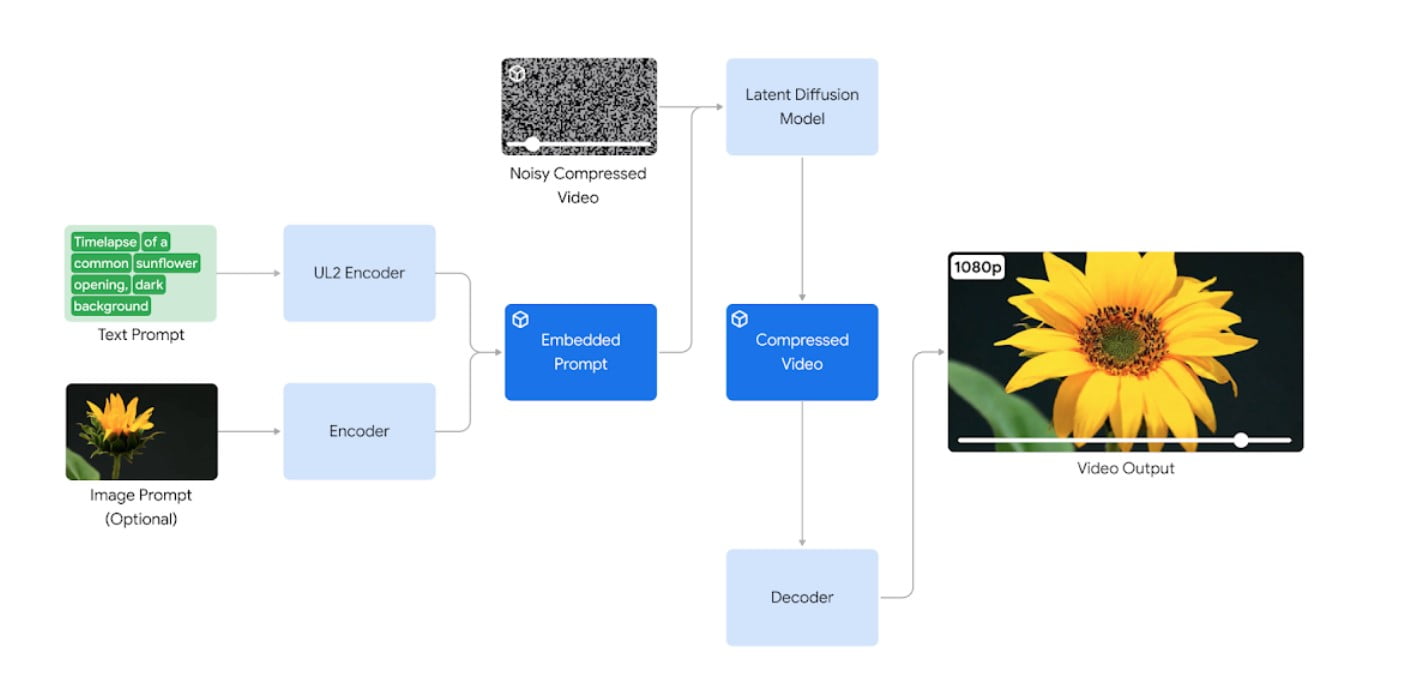
At the heart of Veo’s visual consistency and coherence lies the implementation of cutting-edge latent diffusion transformers. These advanced architectural components enable Veo to maintain the integrity of characters, objects, and overall visual styles across video frames, ensuring a seamless and immersive viewing experience.
Exploring Extended Narratives and Storyboarding
Beyond the generation of individual video clips, Veo also demonstrates the ability to construct longer, narrative-driven sequences. By accepting a series of prompts that together tell a story, the model can generate videos that extend beyond the typical minute-long duration, opening up new avenues for cinematic storytelling.
Responsible Data Sourcing and Ethical Considerations
As Veo’s development progresses, Google has emphasized the importance of responsible data sourcing and ethical considerations. While the company acknowledges the potential use of YouTube content in Veo’s training, it has assured that all such utilization adheres to the platform’s terms of service and the rights of content creators. Ongoing collaborations with stakeholders from the film, music, and artistic industries aim to establish a transparent and equitable framework for the responsible deployment of this AI technology.
The Future of Veo: Integrating with Existing Workflows
As Veo continues to evolve, Google envisions seamless integration with existing video production workflows, empowering creators to harness the model’s capabilities within familiar tools and platforms. The potential integration with YouTube Shorts and other Google products suggests a future where Veo’s generative prowess becomes readily accessible to a broad spectrum of creators, democratizing the art of video production.
By unlocking the power of AI-driven video synthesis, Google’s Veo stands as a remarkable testament to the rapidly advancing field of generative media. As the creative community eagerly embraces this revolutionary technology, the future of filmmaking and visual storytelling is poised for a transformative shift, ushering in a new era of boundless imagination and unprecedented creative expression.
Definitions
- Google Veo: An AI model by Google designed for high-quality video generation, offering advanced editing and cinematic control features.
- Google: A multinational technology company specializing in Internet-related services and products, including search engines, software, and AI.
- Generative Query Network (GQN): A neural network architecture used for generating and understanding complex scenes from partial observations.
- DVD-GAN: A deep video generation model designed to create realistic video sequences from static images.
- Imagen-Video: A model that uses AI to generate videos from text descriptions.
- Phenaki: An AI system focused on generating coherent and consistent visual narratives.
- WALT: A framework for transforming text into video narratives.
- VideoPoet: An AI tool for generating poetic visual content from textual inputs.
- Lumiere: An AI model designed to enhance the visual quality and coherence of video content.
- AI Video Generation: The use of artificial intelligence to create, edit, and enhance video content automatically.
Frequently Asked Questions
- What is Google Veo? Google Veo is an AI-powered video generation model developed by Google. It creates high-quality 1080p videos and offers advanced features like cinematic editing and visual consistency.
- How does Google Veo ensure visual consistency in videos? Google Veo uses latent diffusion transformers to maintain visual consistency across video frames. This technology helps in producing seamless and coherent videos that resemble real-life footage.
- What kind of training data does Google Veo use? Google Veo is trained on extensive high-quality video data, building on previous models like GQN, DVD-GAN, and Imagen-Video. This training includes detailed captions to enhance its understanding of prompts and visual semantics.
- How can creators access Google Veo? Initially, Google Veo will be accessible to a select group of creators through VideoFX, an experimental tool within the AI Test Kitchen. Google plans a broader release after refining the model based on early feedback.
- What ethical considerations are in place for Google Veo? Google Veo incorporates watermarking via SynthID, safety filters, and memorization checks to mitigate privacy, copyright, and bias risks. Google emphasizes responsible data sourcing and ethical deployment.



